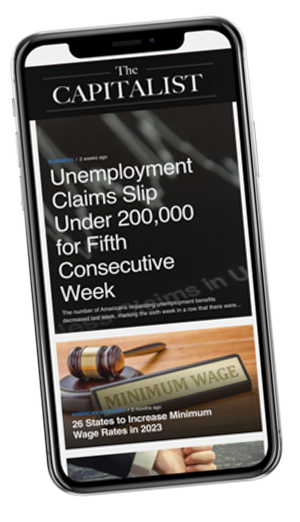Real Estate
Real Estate Strategy: The BRRRR Strategy

The BRRRR method is a popular strategy in real estate investing. It combines house flipping and rental property investing into one. Here’s what it stands for:
• Buy
• Rehab
• Rent
• Refinance
• Repeat
Here’s a quick look at the method: first, buy a nasty property with a personal loan. Then flip it and rent it out to a good tenant who will pay on time. Afterward, you refinance your personal loan with a mortgage. You now own a rental property.
If all goes well, you now have a steady flow of cash from a tenant and a low mortgage payment. On top of that, you can sell the property when you want to sell it. There’s no pressure to sell since you’re effectively making income. Now you can wait until the market is good to sell the property.
But that’s not the only advantage. In some cases, this strategy doesn’t even require you to invest your own money. Ideally, the initial loan will cover the cost of the property and fixing it up. Plus, you can take advantage of long term capital gains tax, unlike house flippers.
Let’s walk through the steps of the BRRRR method for a close-up of the process.
1. Buy
Similar to house flipping, you’re looking for a property that’s way below market value. Remember, you’ll be putting money into this property to fix it up, but it shouldn’t require an exorbitant amount to repair. Take your time in choosing the right place.
Buying the appropriate property for the right price can be tricky, especially if it’s your first time. One of the most important factors to consider is the refinance (step 4). Banks usually only refinance a house at 75% of its fair market value.
Here’s an example of how you want the math to work out:
• You purchase a house for $65,000.
• You put in $10,000 of repairs.
• The value of the house becomes $100,000.
• When you refinance, the bank gives you a loan of $75,000.
• You can use the new loan of $75,000 to pay off the initial loan.
Of course, money doesn’t always work out this neatly. Sometimes repairs cost more than you anticipated. Sometimes the appraisal is lower than you expected (An appraisal is an estimate of how much your house is worth). The point is you want to do your homework before buying a property.
Here’s a basic math equation to help you calculate a purchase:
Remember to give yourself some buffer room. Most people tend to go over budget than under budget. This equation is only gives you a ballpark calculation.
It’s also important to keep in mind your long term goal when using the BRRRR method. You’re flipping the property, renting it out, and securing refinancing. In other words, don’t get lazy after you purchase a property. Get busy renovating.
2. Rehab
Your first goal in rehab is making the property functional and livable. No one wants to rent from a slumlord. Plus, if you don’t put work into the property, chances are your appraisal will be low. Don’t skimp on rehab. Make sure it’s up to code and meets market standards.
There are a lot of options when it comes to renovating a property, but which ones do you choose? Here’s a dead simple principle to apply: make the renovations that will add more value than they cost. Let’s list some major examples:
• Add a spacious bedroom. If you add a bedroom you’re effectively increasing saleability. Instead of marketing a 1-bedroom rental, you can market it as a 2-bedroom rental. Also, people love having a spacious bedroom.
• Convert a half-bath to a full bath. Having a bigger bathroom (and more bathrooms) really appeals to renters and buyers. If you only have one bathroom consider adding another.
• Open up the kitchen. Nobody likes a cramped kitchen. Can you eliminate a wall and give it more countertop space?
• Add outdoor aesthetics. Paint trim, add window shutters, etc. These can seem insignificant, but they make a huge difference. People are human, and first impressions have an impact on renters and buyers.
Generally speaking BRRRR investors aren’t flipping luxury homes. Chandeliers, hot tubs, and granite countertops will cost more money than they make. Focus on items that give you more bang for your buck, such as
• Refinishing hardwood floors.
• Using two-tone paint.
• Adding tiles.
3. Rent
Now that your property is beautiful, it's time to find a tenant. Banks usually will not refinance a property unless it’s occupied. So it’s natural to do this step first before refinancing.
The last thing you need is a lousy tenant who will skip payments and wreck the place. You poured a lot of time and money into this house and you need a steady flow of monthly cash. So screen your tenants carefully.
Always notify your tenants before an appraiser visits the property. You can usually leave a note and give them a courtesy call before the appraisal. Keep in mind, local laws may require different timings and methods for notifying tenants.
Make sure you give your tenants enough time to clean up their apartment. If they won’t be at home during the appraisal, kindly ask them to remove their pets during that time.
4. Refinance
It is extremely important to understand the details of this step before purchasing any properties in step 1. As mentioned earlier, there are some things that can go wrong with this step. Do as much homework as you can ahead of time.
Different banks offer different seasoning periods. This is the period of time you must wait before refinancing a house. The shorter the better. In some cases, a bank is willing to refinance as soon as the property is appraised. In other cases, banks will make you wait a year.
Not every bank will offer cash out when you refinance your property. Some will only pay off the debt. You’re looking for a bank that offers cash out.
You will have to research and find a bank that’s right for you. Start by networking through other investors. If real estate investors are using certain banks, chances are you can use them too.
Once you find a bank you need to approach the lender in a professional manner. Remember, these people are giving you a loan. Make sure you’re taking all the information they need regarding the property.
5. Repeat
If you execute the method appropriately, you can pull all your money out of a property and invest it in another property. The BRRRR strategy is great for buying solid rental properties with cash flow. Long term it’s great for accumulating rental properties.
Alternatively, you can sell your properties if you need money. This decision depends on your personal preferences and location. Some markets favor the rental business while others favor flipping houses. And there are pros and cons to both.
Selling a house brings in a small windfall that can be used in emergencies or to invest in more properties. The downside, of course, is that the property will no longer give you monthly cash flow from a tenant.
Keeping rental properties provides income for the rest of your life. You’ll eventually have to do maintenance and find new tenants. But this is significantly less work than flipping houses. As you get older you’ll probably want to make money from rentals rather than flipping houses.
You’ll have to decide what’s best for you.
Risks of the BRRRR Method
Like any investment, there are risks with the BRRRR strategy. Some of these were already mentioned, but let’s list them out.
• Costs and time for renovation could be high. Before buying a property try your best to estimate the costs that will go into renovations. These are guesses, so it’s wise to overestimate the costs of repairs. This way you have flexible money in case they cost too much.
• Banks may not approve refinancing. Always keep in mind that refinancing can be a difficult step. A part of the solution is to play the numbers game. Approach several banks. The more banks you talk to the more likely you’ll find one that approves refinancing.
• The appraisal could be too low. Appraisers are human and make mistakes. You could expect a house to be appraised at $200,000 and it might be appraised at $180,000.
Unfortunately, there’s not a lot you can do to change an appraisal. The best course of action is to have backup money in case the appraisal is low.
Before making any major decisions always do a lot of research and have backup money. The BRRRR strategy comes with a contingency plan. If you can’t refinance your loan you can at least sell the property. It’s not ideal since you’ll likely pay higher taxes, but it’s a way to lessen the financial blow.
Is the BRRRR method right for you?



